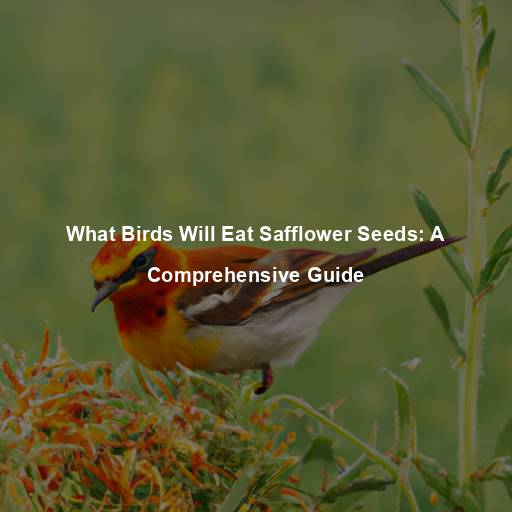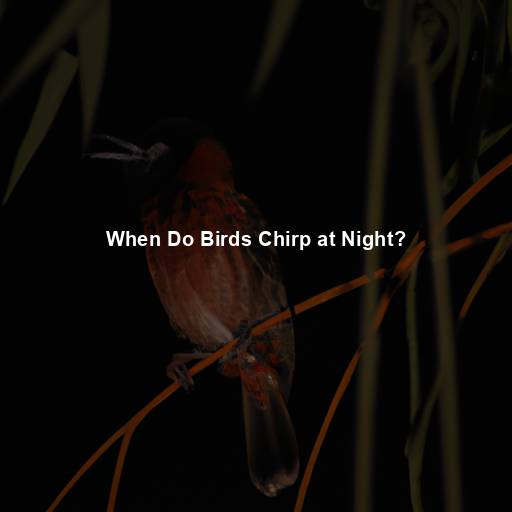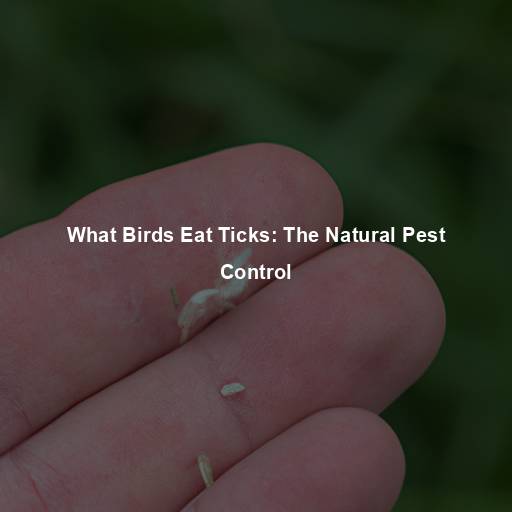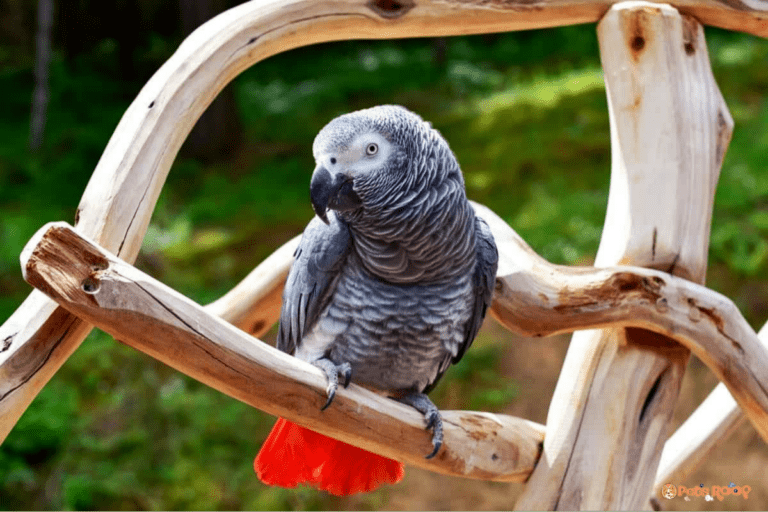Why Birds Lay Their Eggs in a Nest: Unveiling the Secrets of Avian Reproduction
Last Updated on October 20, 2023 by Evan
Contents [hide]
- 1 The Fascinating World of Avian Reproduction
- 2 Understanding the Purpose of Nest Building
- 3 The Art of Nest Construction
- 4 The Significance of Egg Incubation
- 5 Hatching and Beyond: The Role of Nest in Early Development
- 6 Intricacies of Incubation
- 7 The Transition to Fledgling
- 8 The Circle of Life Continues
- 9 Appreciating the Wonders of Avian Reproduction
- 10 FAQs: Why Birds Lay Their Eggs in a Nest
The Fascinating World of Avian Reproduction
The allure of birds, their dazzling feathers and angelic tunes, has forever hypnotized humanity. Yet, beneath their beguiling exterior lies a realm of bewildering reproductive rituals that continue to confound both scholars and enthusiasts. Among these enigmas, the act of nest-building and egg-laying takes center stage, beckoning us into a world of wonder. Embark upon this voyage of intrigue as we unveil the veiled motives behind this captivating behavior.
Understanding the Purpose of Nest Building
The Evolutionary Advantage
Birds possess a mesmerizing instinct for nest building, a timeless behavior that unveils the unwavering power of their instincts. As they weave intricate homes in a whimsical dance suspended from branches or craft simple earthen abodes, the sheer diversity of their nest structures leaves us in awe. Yet, as we marvel at their architectural prowess, we find ourselves questioning the enigmatic force that compels these feathered creatures to laboriously engage in this timeless task. What lies beneath the surface of their avian souls, driving them to relentlessly build their havens in the sky or upon the earth?
Nest building, the mysterious art of avian architecture, is a testament to the marvels of evolution. It is a delicate dance between survival and the precious bond between parent and offspring. Nests serve as fortresses of resilience, shielding vulnerable eggs and hatchlings from the unpredictable whims of nature and the lurking threats of predators. With each meticulously crafted twig and carefully arranged leaf, birds weave a tapestry of hope, exponentially increasing the odds of successfully raising their precious brood.
Courtship and Pair Bonding
Nest building is no ordinary task for bird enthusiasts; it is a labor of love and a testament to the unwavering dedication of our avian friends. This awe-inspiring ritual begins with courtship, as male birds craft intricate nests that serve as both a symbol of their commitment and a bold declaration of their potential as fathers. With each meticulous stroke of their beaks, these feathered architects create safe havens that speak volumes to potential mates, offering a glimpse into their strength and the promising genes they carry. The artistry and purpose behind nest building is truly a wonder of nature, leaving us in awe of the burst of creativity and perplexity that exists within the animal kingdom.
The art of nest building goes beyond creating a cozy home for avian couples. It is a fascinating journey filled with intricate interactions and unexpected twists. As male and female birds embark on this joint venture, their feathers become entwined in a delicate dance of partnership, forging a bond that transcends the ordinary. Through the shared responsibility of nest construction, these feathered companions lay the groundwork for a harmonious harmony, unraveling the enigma of successful parenting and synchronizing their efforts in hatching and raising their precious offspring.
The Art of Nest Construction
Materials and Techniques
Birds exhibit remarkable diversity in their nest-building techniques and the materials they use. Some species are skilled architects, meticulously weaving together twigs, grasses, and leaves, while others rely on natural cavities or pre-existing structures. Let’s explore some of the fascinating nest-building strategies employed by different bird species.
Cup Nests
When it comes to crafting their shelters, passerine birds like sparrows, finches, and warblers opt for the timeless classic: the cup nest. These feathered architects go above and beyond, utilizing nature’s tools to fashion shallow cups that can gracefully hang from trees, shrubs, or yes, even man-made edifices. Building blocks of twigs, grasses, and assorted plant materials form the foundation, while a touch of mud or the strength of spider silk solidify their masterpieces. As if that weren’t impressive enough, these avian artisans go the extra mile to fashion a cozy interior, lined with the finest feathers, moss, and even animal fur for an extra touch of luxury.
Burrow Nests
Deep beneath the earth’s surface, within the embrace of sandy or muddy banks, a captivating tale of determination unfolds. Kingfishers and puffins, their beaks and feet serving as their mighty tools, embark on an audacious mission. With indefatigable persistence, they dig tunnels into the very fabric of the land, carving out sanctuaries for the future generation. These burrow nests, extending several feet into the depths, bestow a sense of awe and amazement.
Platform Nests
Nestled high above the ground, platform nests exude a sense of grandeur and craftsmanship. The regal ospreys, majestic eagles, and graceful herons are renowned architects, meticulously crafting these abodes of wonder. Made from a symphony of sturdy sticks and branches, these avian maestros lay the foundation for their elevated dwellings. With each passing season, the nests evolve, morphing into deep, bowl-shaped sanctuaries, cradling precious eggs in a tapestry of nature’s ingenuity.
The Significance of Egg Incubation
Ensuring Optimal Conditions for Development
After building a cozy and secure nest, the dedicated avian parents embark on the next perplexing chapter of their reproductive journey: incubation. This intricate process involves the art of maintaining the perfect warmth and temperature to nurture their precious eggs. Whether it’s the tireless efforts of one or the cooperative teamwork of both parents, this crucial stage varies across different bird species, leaving us in awe of their burst of instinctual wisdom.
During incubation, birds carefully regulate the temperature of the eggs by sitting on them or using their bodies to provide warmth. This constant brooding helps maintain the necessary conditions for the embryos to develop successfully. The duration of incubation varies among species, with some eggs hatching within a matter of days, while others require several weeks.
Parental Care and Investment
The art of incubation is a remarkable form of dedication found in the avian world. It involves a profound parental commitment, where birds invest their time and energy into maintaining the perfect temperature for their precious eggs. This critical act not only safeguards the survival of their offspring but also serves as a shield against lurking predators, unveiling the complexities of nature’s delicate balance.
In the fascinating realm of nature, there exists a captivating phenomenon during the incubation period where unwavering guardianship unfolds. As if a primordial dance, parents dutifully stand guard, displaying an awe-inspiring tenacity to protect their precious nest from potential invaders. In this intricate web of life, this resolute dedication to safeguarding the unhatched eggs speaks volumes about the extraordinary parental instincts and the sheer imperative of safeguarding the delicate process of hatching, allowing the newfound hatchlings to venture into an uncertain world, full of possibilities.
Hatching and Beyond: The Role of Nest in Early Development
Birth and Maturation
Once the patient incubation period comes to a close, it’s as if a brand new chapter in the captivating avian life story begins. With a combination of bewilderment and joy, the tiny hatchlings make their grand entrance into the world, completely dependent on their doting parents for sustenance and shelter. The humble nest, a sanctuary of utmost importance, takes on a newfound significance during this crucial stage of their remarkable journey.
Nurturing the next generation of feathered friends is a perplexing endeavor. Behind the scenes, instinctual intelligence guides the construction of the nest, a safe haven where hatchlings experience the ultimate burst of life. From the chosen materials to the meticulously crafted design, every detail is carefully selected to create an optimal environment for the young birds to spread their wings. Moreover, this centralized abode allows for a synchronized symphony of parental care as they tend to their brood, delivering nourishment with unwavering dedication.
Learning and Acclimatization
As the fledglings stretch their wings and explore the world beyond their cozy abode, they find themselves in a perplexing classroom of life. Nest-enclosed hatchlings bear witness to their parents’ every move, eagerly soaking up the wisdom of the avian world. Through imitation and observation, these delicate creatures navigate the intricate dance of finding food, evading danger, and mastering the art of camaraderie.
The nest also acts as a protective barrier, shielding the fledglings from the outside world until they are physically and mentally prepared for their first flight. This gradual acclimatization and learning process within the nest help ensure a successful transition from the dependency of the nest to independent life in the wild.
Nests in Unconventional Locations
Step into the wonderful world of avian ingenuity as we delve into the extraordinary nesting habits of certain bird species. Prepare to be amazed as we showcase the rebellion against conventional nesting norms. From the sky-high heights of urban skyscrapers to the crevices of rocky cliffs, these feathered architects will leave you in awe with their audacious choice of nesting abode. So, fasten your seatbelts and get ready for a wild ride as we unravel the mysteries of avian unconventionalities.
Cliff-Nesting Birds
Certain bird species, such as the Peregrine Falcon and the Common Swift, are known for their affinity for cliffs as nesting sites. These birds utilize the rugged terrain to their advantage, constructing nests on narrow ledges or within crevices. The cliff’s verticality provides a natural defense against predators, ensuring the safety of their eggs and nestlings.
Nesting in Human-Made Structures
As human civilization expands, birds have adapted to urban environments, often taking advantage of human-made structures for nesting. Species like House Sparrows and Barn Swallows have become adept at building nests in buildings, bridges, and even streetlights. This behavior demonstrates the remarkable adaptability of birds and their ability to coexist alongside humans.
Ground-Nesting Birds
In the enchanting world of avian habitation, a fascinating phenomenon emerges – the choice between lofty or down-to-earth dwellings. Enter the realm of the ground-nesting birds, renegades who shun the aerial life for the reassuring embrace of terra firma. With their aversion to heights, hailed species like the Killdeer and the American Oystercatcher ingeniously forge shallow sanctuaries within the soil, their secret oases of procreation. These birds, masters of deception, are artistic architects of concealment, effortlessly blending their nests with the backdrop of nature’s tapestry.
Intricacies of Incubation
Egg Turning and Oxygen Supply
Throughout the anticipation-filled gestation period, avian creatures partake in a diverse array of actions aimed at guaranteeing the precious eggs receive an ample supply of life-sustaining oxygen and are enveloped in an environment conducive to their flourishing growth.
Have you ever wondered about the intriguing ritual of birds turning their eggs? It’s a fascinating process that involves meticulous rotation throughout the day. This peculiar behavior serves a crucial purpose – it prevents the embryo from adhering to the inner shell membrane and aids in ensuring a balanced distribution of heat and oxygen. With such dedication to the art of egg turning, birds play a vital role in safeguarding healthy embryonic development and averting potential deformities.
Did you know that birds have a pretty nifty way of ensuring their eggs get the right amount of oxygen? It turns out that they create these super tiny pores in the eggshell, which let the developing embryo breathe. It’s like this amazing exchange system where oxygen flows in and carbon dioxide flows out, all to make sure that little bird inside gets enough air. Talk about a clever adaptation!
Incubation Period and Parental Roles
The duration of the incubation period varies significantly among bird species. Some birds, such as chickens, have relatively short incubation periods of around 21 days. On the other hand, albatrosses and some penguin species have exceptionally long incubation periods that can last several months.
When it comes to the task of incubation, conventional gender roles are not always the norm. Take the majestic Emperor Penguin, for example. In this intriguing avian species, the male steps up to the plate, shouldering the entire burden of incubating the precious egg while the female explores the food-filled realm. This remarkable display of parental responsibility showcases the fascinating array of tactics that our feathered friends employ to safeguard the well-being of their young.
The Transition to Fledgling
Nest Abandonment
As the eggs crack open, tiny creatures emerge into a world full of uncertainties. The young birds, fragile and vulnerable, must now confront the daunting task of taking flight and leaving the comfort of their cozy nests. This pivotal moment marks a crucial turning point, teeming with both excitement and trepidation, as these feathered adventurers venture into the unknown, ready to spread their wings and conquer the vast skies above. It is a metamorphosis filled with unpredictability and trials, where survival and adaptation collide in a mesmerizing dance of nature’s perplexities.
As the fledglings develop their flight feathers and strengthen their wings, they become more restless within the nest. The parents also play a role in encouraging their young to leave the nest by reducing their feeding visits and enticing them to explore their surroundings.
Eventually, the fledglings summon the courage to take their first flight, leaving the nest behind. This momentous event marks the beginning of their independent lives, as they venture out into the world to seek food, establish territories, and find mates of their own.
Post-Nesting Care
While the act of leaving the nest signifies the end of the parents’ direct involvement in their offspring’s lives, some bird species continue to provide post-nesting care. For instance, certain songbirds continue to feed and protect their fledglings for a period after they have left the nest, ensuring they gain the necessary skills and strength to survive on their own.
After the cozy comfort of the nest, the world can be a daunting place for young birds. However, their parents are not just leaving them to figure it all out on their own. No, no! They are actually offering some essential post-nesting care, including vital survival skills like foraging techniques and how to stay away from those sneaky predators.
The Circle of Life Continues
Repeating the Cycle
Once birds have successfully raised their offspring and seen them through the critical stages of growth and development, the cycle of avian reproduction repeats itself. As the next breeding season approaches, birds will once again engage in courtship rituals, nest building, and egg-laying.
Every passing year, in a mesmerizing display of resilience and nature’s mysterious ways, these extraordinary creatures undertake the enigmatic voyage of procreation. In their intricate art, they construct intricate abodes, tenderly incubate precious eggs, and tenderly nurture their fledglings, ensuring the timeless endurance of their kind. With each cycle, the avian realm unveils a graceful dance that mystifies and captivates all those fortunate enough to bear witness.
Appreciating the Wonders of Avian Reproduction
The behavior of birds in laying their eggs in nests is a testament to the incredible intricacies of nature. From the evolutionary advantages of nest building to the dedication displayed during incubation and the subsequent care of hatchlings, birds exemplify the remarkable adaptability and ingenuity found in the animal kingdom.
Delve into the captivating world of birds’ nest-building and witness the mysterious intricacies that lie within. Discover the enigmatic reasons behind their tireless efforts, as they create havens of nurture and protection for their fragile offspring. Explore the enchanting journey from the delicate formation of the nest to the extraordinary act of incubation, and unravel the astonishing web of life that enshrouds the entire process.
There’s something truly mesmerizing about stumbling upon a bird’s nest, hidden within the protective embrace of nature’s architecture or tucked away in the corners of our man-made structures. It’s an extraordinary reminder of the extraordinary lengths our avian friends go to ensure the continuity of their species and the perpetuation of life itself. With their unwavering determination and undying commitment, birds showcase a resilience that leaves us in awe, appreciating the intricate tapestry of existence they weave in the world around us. So, next time you chance upon a feathered masterpiece, take a moment to bask in the wonders of nature’s design.
FAQs: Why Birds Lay Their Eggs in a Nest
Why do birds lay their eggs in a nest?
The age-old tradition of birds constructing nests is a mysterious marvel. These intricate structures serve as safe havens for their precious offspring, shielding them from the unpredictable forces of nature and the lurking dangers of the wild. In this peaceful sanctuary, birds can rest assured that their fragile eggs are safeguarded from potential predators, brutal weather tantrums, and any unforeseen mishaps.
How do birds choose where to build their nests?
The choice of nest location depends on the species of bird. Different species have different preferences and requirements when it comes to nesting sites. Some birds build their nests on the ground, others in trees or shrubs, and some even create nests in cavities or man-made structures. Factors influencing their choice may include availability of suitable materials, protection from predators, concealment from the elements, or the presence of nearby food sources.
Do all birds build nests?
In the fascinating world of avian architecture, not every feathered friend follows the traditional path of nest-building. An intriguing exception lies in the realm of brood parasites, where certain bird species, like the elusive cuckoos, cunningly deposit their precious eggs in the unsuspecting nests of other birds, relying on the unsuspecting foster parents to raise their alien offspring. Moreover, the enigmatic realm of seabirds and waterfowl unveils a captivating twist, as some of these magnificent creatures opt for simplicity, forsaking the art of nest construction for humble scrapes on the ground or cozy burrows. The diversity of avian nesting habits continues to astound, leaving us perplexed and bursting with curiosity.
How do birds build their nests?
From the skillful gathering of twigs to the delicate arrangement of feathers, the artistry of bird nests never ceases to amaze. Each species has a unique approach, employing nature’s toolbox of twigs, grass, leaves, and even mud. Some craftspersons opt for a touch of sophistication, blending saliva with mud to construct intricate abodes, while others seek refuge in pre-made nooks and crannies. The ingenuity and resourcefulness displayed by these avian architects evoke a sense of wonder and admiration.
Do all nests look the same?
No, nests can vary greatly in their appearance depending on the bird species. Each bird typically has its own unique style of nest construction. Some nests may be simple and compact, like a small cup, while others can be elaborate and intricate, designed with intricate patterns or structural features. Certain birds, such as weavers or bowerbirds, are especially known for their remarkable nest-building abilities and architectural skills.
What happens after the birds lay their eggs in the nest?
After the eggs are laid, the parent birds take turns incubating them to provide the necessary warmth for development. They carefully regulate the temperature by sitting on the eggs or covering them with their bodies. The parents also undertake the responsibility of feeding and protecting the eggs until they hatch. Once hatched, the parent birds continue to care for and nurture their young until they are old enough to leave the nest and fend for themselves.





